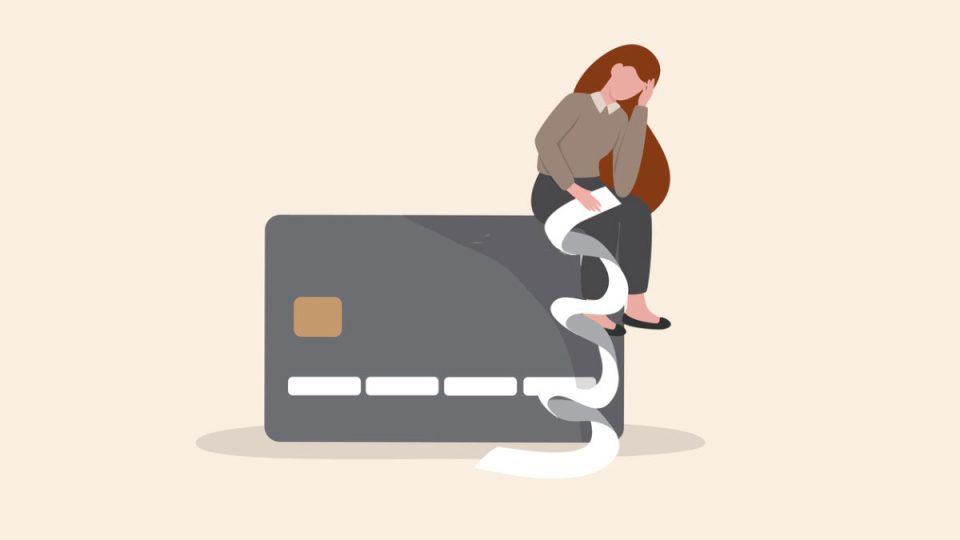For more stories like this, sign up for the PLANSPONSOR NEWSDash daily newsletter.
Increased Credit Card Debt Poses Threat to Emergency and Retirement Savings
Nearly half of the respondents to a LendingTree survey said they are living paycheck-to-paycheck.
Saving for retirement or maintaining an emergency savings fund has become an afterthought for the large share of Americans dealing with credit card debt and struggling to make ends meet, according to experts at LendingTree.
After surveying more than 2,000 U.S. consumers between ages 18 and 77 in February, LendingTree found that 64% are living paycheck-to-paycheck, at least periodically. Almost half, 46%, of the surveyed population live this way all the time.
Even if people are not living paycheck-to-paycheck, many Americans have very little discretionary income, as 35% reported having less than $100 of discretionary spending money per month after covering all their financial obligations, according to LendingTree’s survey.
Because of rising inflation and uncertain economic times, Matt Schulz, chief credit analyst for LendingTree, says it is especially difficult for people to focus on saving for events in the distant future, including retirement.
“Most people’s financial margin for error is so small, which leaves less money for savings, whether it’s an emergency fund or retirement,” Schulz says. “I don’t think there’s any question that people are considering borrowing from their retirement savings to help them make ends meet as inflation rises.”
As a sign of the monthly financial pressures that consumers face, credit card balances increased by $61 billion to reach $986 billion in the fourth quarter of 2022, according to the Federal Reserve, surpassing the pre-pandemic high of $927 billion. Auto loan balances also increased by $28 billion in Q4 2022, continuing an upward trajectory that has developed since 2011.
Credit bureau Experian reported that members of Generation X had the highest credit card debt of any generation in 2022 at an average of $8,134.
Almost half of LendingTree’s respondents said they have been unable to cover a primary bill with the money in their bank accounts at least once since inflation began rising in 2021, and 58% of those people said they used credit cards to make ends meet at least once.
LendingTree also found that discretionary income varies with age. While nearly one in four Baby Boomers (ages 59 to 77) reported having more than $1,000 in monthly discretionary income, only 14% or 15% of Gen Zers (18 to 26), Millennials (27 to 42) and Gen Xers (43 to 58) said the same.
Most survey respondents said they have between $100 and $499 in discretionary income, leaving little wiggle room for an emergency fund.
The SECURE 2.0 Act of 2022 included a new provision that allows plan sponsors to offer short-term emergency savings accounts as part of a defined contribution plan.
Contributions to the emergency savings account are capped at $2,500 or a lower amount determined by the plan sponsor. Participants are allowed to take at least one withdrawal per month, and the first four withdrawals per year cannot be subject to fees.
While this provision only becomes effective in 2024, Schulz says plan sponsors should consider anything that would help people build their emergency funds.
“Having emergency savings is really key to helping people break the cycle of debt that so many people find themselves in,” Schulz says. “If you pay off your credit card debt and have no emergency savings, the next time you have to take your dog to the vet or get a car repair, chances are that expense is just going to go back on your credit card.”
According to LendingTree, 60% of respondents said they do not have three months’ worth of living expenses saved in an emergency fund, and 19% said they do not earn enough money to even try.
Even though Gen Zers live paycheck-to-paycheck more than any other generation, LendingTree’s survey found that they are the most optimistic about their financial habits, as 90% of the youngest surveyed generation feel at least somewhat confident in their ability to pay their bills each month.
Schulz says this optimism may partially come from the fact that a lot of Gen Zers are still living with their parents or receiving financial support from their parents.
A recent study from Retirement Investments ,a financial services company, found that one in five parents have sacrificed their own retirement savings to help support their children, and two in five still have adult children living at home. In addition, 60% said they do not think their child will become financially independent in 2023.
Schulz adds that Gen Zers are also at a stage of life where they are hopeful about the future and have everything in front of them, whereas Millennials, Gen Xers and Boomers have likely experienced more financial chaos in their lives. Millennials are also more likely to be in the process of buying a house or starting a family, which both come with hefty costs.
However, Schulz notes that student loan debt is a significant burden on younger generations, and the student loan payment pause over the last few years has allowed people to focus more on paying off other types of debts and bolstering their savings.
Once student loan payments resume, Schulz says some people who are currently able to pay off their credit card debt may run into trouble.
LendingTree commissioned Qualtrics to conduct its online survey of 2,011 U.S. consumers ages 18 to 77 from February 21 to 24, 2023.



